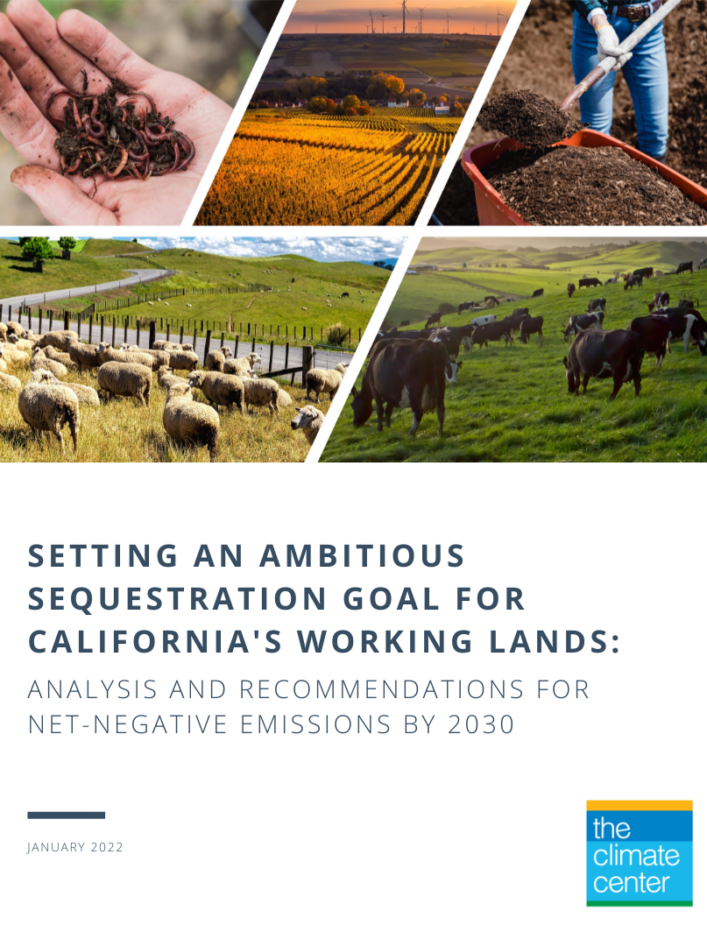Every scenario in which we limit global warming to 1.5 degrees Celsius, as outlined in the Paris agreement, involves dramatically cutting emissions and removing carbon from the atmosphere. Rather than rely on unproven technologies like carbon capture and storage (CCS) that prolong fossil fuel reliance and pollution, California can look to its millions of acres of cropland, pastures, ranches, parks, and urban spaces to sequester carbon.
The Climate Center’s new report, Setting an Ambitious Sequestration Goal for California’s Working Lands: Analysis and Recommendations for Net-Negative Emissions by 2030, finds that California’s working and urban lands can sequester up to 100 million metric tons (MMT) of carbon dioxide equivalent (CO2e) per year. That’s far more than previously estimated and equivalent to about one-quarter of the state’s annual greenhouse gas emissions.
Key findings and recommendations:
- Proven techniques like compost application, agroforestry and urban tree planting not only draw down carbon, but also improve water security, reduce air pollution and extreme heat impacts, and enhance crop resilience to extreme weather.
- The cost of implementing nature-based carbon sequestration policies at scale in California is roughly $30 billion over ten years from public and private sources, relatively inexpensive for the benefits. In contrast, the economic impact of climate disasters in the state is far greater. For instance, the 2018 wildfire season inflicted $150 billion in damages.
- California must increase funding for state programs to sequester carbon, support a large and well-trained network of technical assistants and on-the-ground implementers, create better end-market opportunities for carbon-sequestering products coming from California working lands, and improve compost infrastructure and regulation.
- Sequestration policies must be designed to address the needs of vulnerable populations, especially farmworkers, frontline, and urban communities. The full participation of these groups is key in the design, advocacy, and implementation of successful natural and working lands sequestration policies and programs.
This report reviews the latest science and perspectives from various organizations. It offers criteria that advocates and policymakers should consider as they determine whether to pursue sequestration on working lands and what emissions reductions targets they can pursue. Scaling up nature-based carbon sequestration is a key pillar of The Climate Center’s Climate-Safe California platform, which also calls on California to rapidly phase out fossil fuels, invest in community resilience, and fund climate solutions at scale.
We’d love to hear your thoughts. Please share any comments or feedback with info@theclimatecenter.org.


